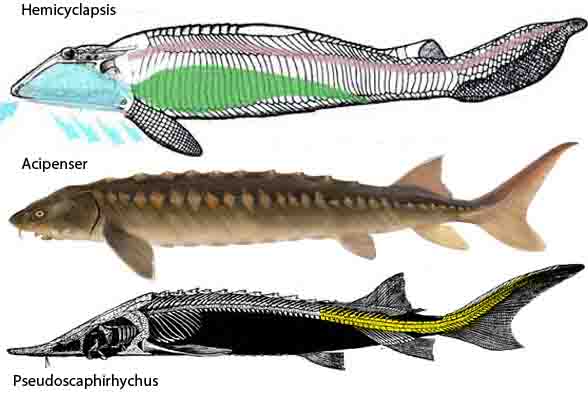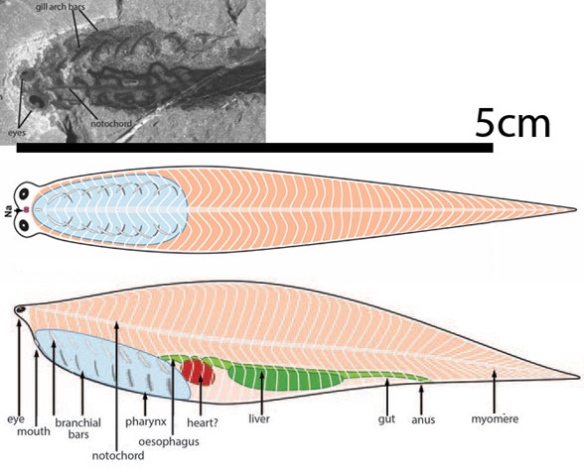Yesterday
the skull bone diagram of Middle Devonian Wuttagoonaspis (Fig 1) helped re-identify the enigmatic and largely fused skull bones of other jawless heterostracans.
Today
the same Wuttagoonaspis diagram (Fig 1) helped re-identify the enigmatic mosaic of skull bones found in sturgeons (Fig 2)… if valid.
Applying tetrapod homologs to fish skulls
is done here (Figs 1, 2) to provide a common identity for scoring all vertebrates in the large reptile tree (LRT, 2306 taxa). In this way bones are free to fuse and fracture, but by giving them colors their homologs to tetrapod skull bones remain constant for scoring in the LRT.
Presently
This is a hypothesis of methodology that requires confirmation, refutation or modification by other workers.
You’ll note the nares
of Wuttagoonaspis are ventral (not visible in figure 1), while those of the sturgeon Acipenser are lateral and confluent with the orbit. Intermediate taxa not tested in the LRT may be unknown at present. Taxon suggestions for this problem are welcome.

To make matters worse
in the LRT more primitive taxa have terminal nares, or a single naris, located dorsally, migrating anterior to short snout from an original position between the eyes in Metaspriggina (Fig 4) in the Cambrian.
So the migration of the naris in basal chordates is a complex problem
awaiting a solution that can be resolved with more transitional taxa that illustrate the journey of the nose around the skull in smaller, more discrete steps that those shown here (Figs 1–4).



